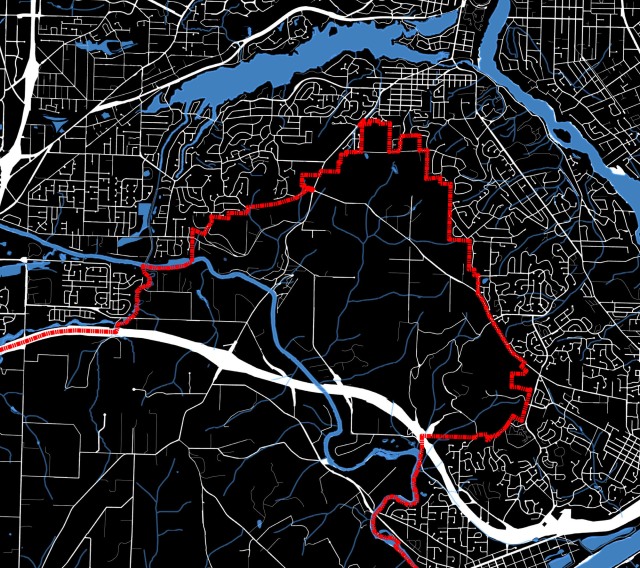“At the meeting of the natural and the urban the world comes into existence, which is to say that there exists in real space—concrete and localizable–a convergence that creates a fundamental cultural distinction…
…Is there a line existing today that could be identified as an urban horizon or natural edge” -Albert Pope ( quoted from Bayou/City in Everything Must Move, (review forthcoming))
Albert perhaps we have found such a contemporary place….well maybe…in the city of Portland. Granted I am taking Albert Pope’s quote’s out of context, as he was speaking of his experiences in Houston–the bayou sprawl city without planning. I’ve been reading Everything Must Move, a fifteen year history of the urban design explorations at RICE university, as a counterpoint to thinking about Portland’s edges. Houston and Portland: two distant bookends of urbanism in American cities.
The following images are snapshots of Portland’s urban growth boundary (UGB) — quick excursions made in GIS, layering street grids (white), waterways (blue), and the UGB (red)
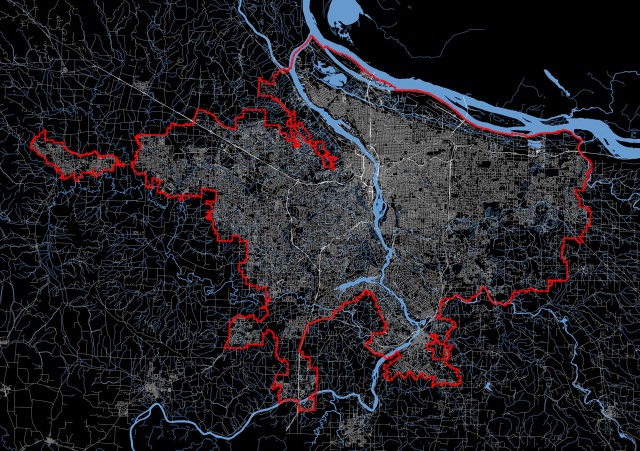 Portland’s UGB in its shifting amoebic entirety (current UGB line).
Portland’s UGB in its shifting amoebic entirety (current UGB line).
In the 1970’s to the present Oregon law has mandated that all its cities designate an urban growth boundary to delineate “urban” from “rural” land. In Portland this political boundary is administered by our regional government, Metro.
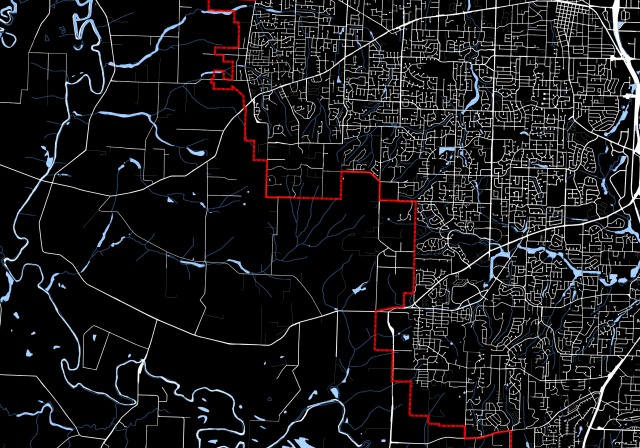 Detail of the southwest edge of the UGB. The radial advancing grid abruptly stops when it hits the UGB border. Most of the open gaps are areas where the UGB has expanded outward (the UGB is a dynamic moving line) and has yet to fill in.
Detail of the southwest edge of the UGB. The radial advancing grid abruptly stops when it hits the UGB border. Most of the open gaps are areas where the UGB has expanded outward (the UGB is a dynamic moving line) and has yet to fill in.
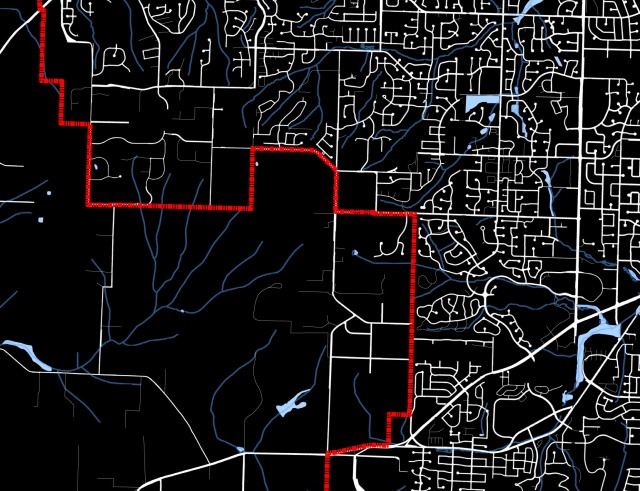 Closer detail of southwestern UGB. The breakup of the urban grid into a rim of suburban cul-de-sacs is apparent.
Closer detail of southwestern UGB. The breakup of the urban grid into a rim of suburban cul-de-sacs is apparent.
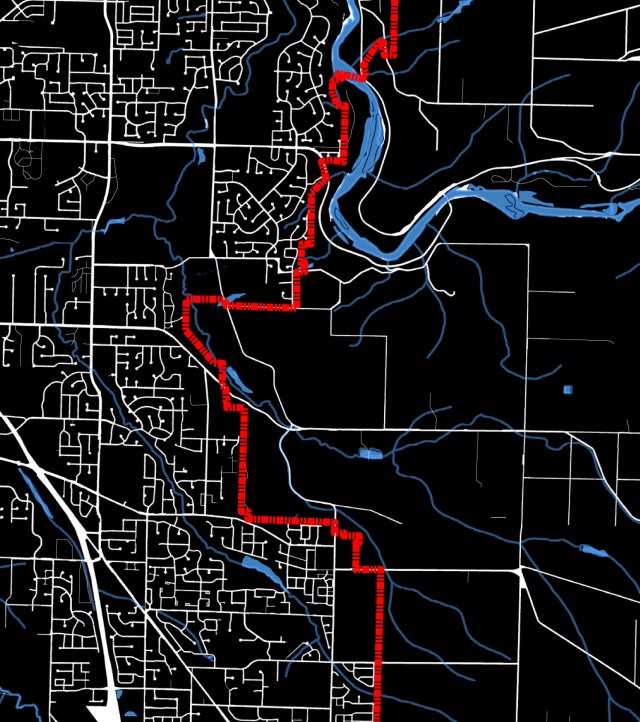 A nearly identical suburban grid condition on the east edge of the city.
A nearly identical suburban grid condition on the east edge of the city.
Does Portland have a condensed, disposal rim…a thin doughnut of sprawl? In contrast to a city like Houston or Atlanta, have we inadvertently created a new prototype or distinct variation of developer driven suburbia? One that rather than leap frog or indeterminately sprawl, fills and transforms the urban fringe more quickly and densely once set loose in predefined areas?
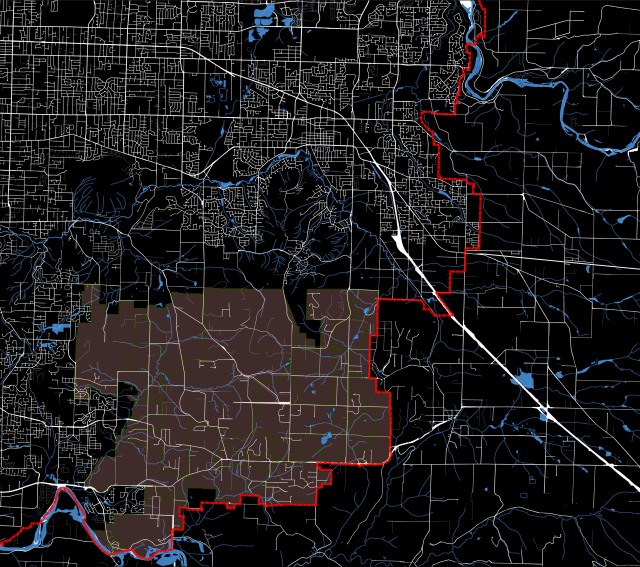 Zoomed out view of the eastern edge of the UGB. The grey-brown area is Damascus, an area over 2,000 acres that was brought into the UGB by Metro in 2002, adding approximately 7% total land area to the city. Note the lack of subdivided grids in this area as it has yet to fill in.
Zoomed out view of the eastern edge of the UGB. The grey-brown area is Damascus, an area over 2,000 acres that was brought into the UGB by Metro in 2002, adding approximately 7% total land area to the city. Note the lack of subdivided grids in this area as it has yet to fill in.
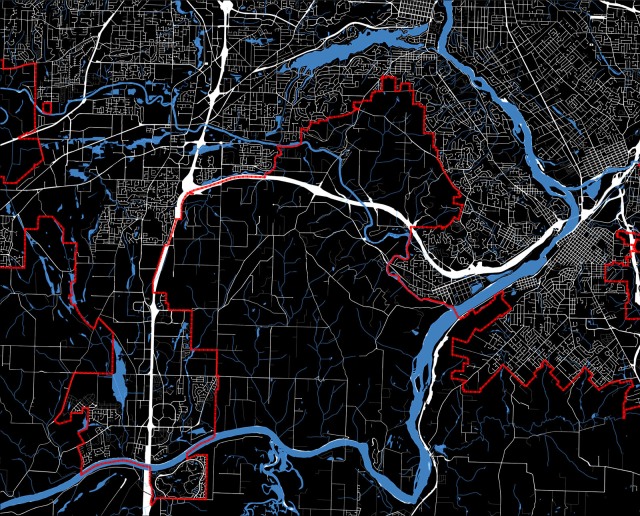 Southern portion of UGB. Here you can see the pastiche of urban Grids and the UGB inversion of city surrounded by countryside. The valley is surrounded by city-zoned landscape.
Southern portion of UGB. Here you can see the pastiche of urban Grids and the UGB inversion of city surrounded by countryside. The valley is surrounded by city-zoned landscape.
Returning to Albert Pope:
“Historically, the urban frontier was recognized to be the built up edge or line of new urban construction. Over the past half century this singular, built up edge has disappeared. The urban frontier has exfoliated from a finite line into a boundless field. It is a zone, a sprawl, a periphery, a region of uncontrolled growth, and it is everywhere.”
Is Portland an exemption to this? Well yes and no. The UGB , as popularly defined, divides “urban” and “rural” land, which is an interesting and quite possibly erroneous dichotomy because both can be considered “urban” depending on how urban is defined. Most of the lands outside the UGB are agriculture or working lands rather than nature in the way we typically think of nature (which is also conceptually problematic) This might be semantic but I think both sides of the line andthe name of the line itself might be better labeled, as both sides are land uses required for urban living, we just tend to associate “urban” with density, asphalt, population and buildings. I’m thinking of contemporary urban ecology that defines urban as all land implicated in the systemic processes of maintaining city lifestyles and functions. I’m thinking of the fact that cities (as commonly defined) occupy a small percentage of land area but require approximately 300-500X their total land area to meet their needs. By this definition Portland’s urban growth boundary would extend far, far further.

